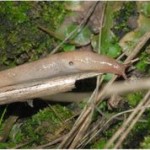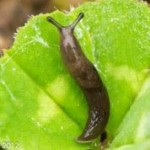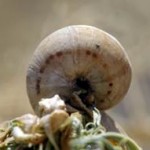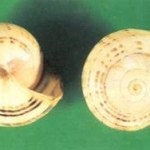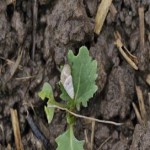Slugs and snails are predominantly pests in the southern and western regions. Snails are not a problem in the northern region, however damaging slug populations have been reported in seedling crops in northern NSW and southern Queensland in recent years.
Increased slug and snail activity may be due to the increase in zero/minimum till and stubble retention practices because the organic content of paddocks increases under such systems, providing an increased food source especially to young slugs and snails.
Other risk factors include prolonged wet weather, trash blankets, weedy fallows and a previous history of slugs and snails. Slugs and snails are best controlled before the crop is planted.
| Species | Distinguishing features | Characteristic damage | Seasonal occurrence | Other characteristics |
|---|---|---|---|---|
Slugs |
||||
| Grey field or reticulated slug Deroceras reticulatum | Light grey to fawn with dark brown mottling. 35 to 50 mm long. Produces a white mucus | Rasping of leaves (complete areas of crop may be missing) | Autumn to spring when conditions are moist especially when soil moisture greater than 25% | Resident pest. Surface active, but seeks moist refuge in soil macro-pores. |
| Black keeled slug Milax gagates | Black or brown with a ridge continuing from its saddle all the way down its back to the tip of the tail. 40 to 60 mm long. | Rasping of leaves (complete areas of crop may be missing), and hollowed out grains | All year round if conditions are moist, but generally later in the season in colder regions |
|
| Brown field slug Deroceras invadens or D. laeve |
|
|
All year round if conditions are moist |
|
Snails |
||||
| Vineyard or common white snail Cernuella virgata |
|
Shredded leaves where populations are high.
Found up in the crop prior to harvest. |
|
|
| White Italian snail Theba pisana |
|
Shredded leaves where populations are high.
Found up in the crop prior to harvest. |
|
|
| Conical or pointed snail Cochlicella acuta |
|
Shredded leaves where populations are high.
Found up in the crop prior to harvest. |
|
|
| Small pointed snail Prietocella barbara |
|
Shredded leaves where populations are high.
Found up in the crop prior to harvest. |
|
|
*Umbilicus – a depression on the bottom (dorsal) side of the shell, where the whorls have moved apart as the snail has grown. The shape and the diameter of the umbilicus is usually a species-specific character.
